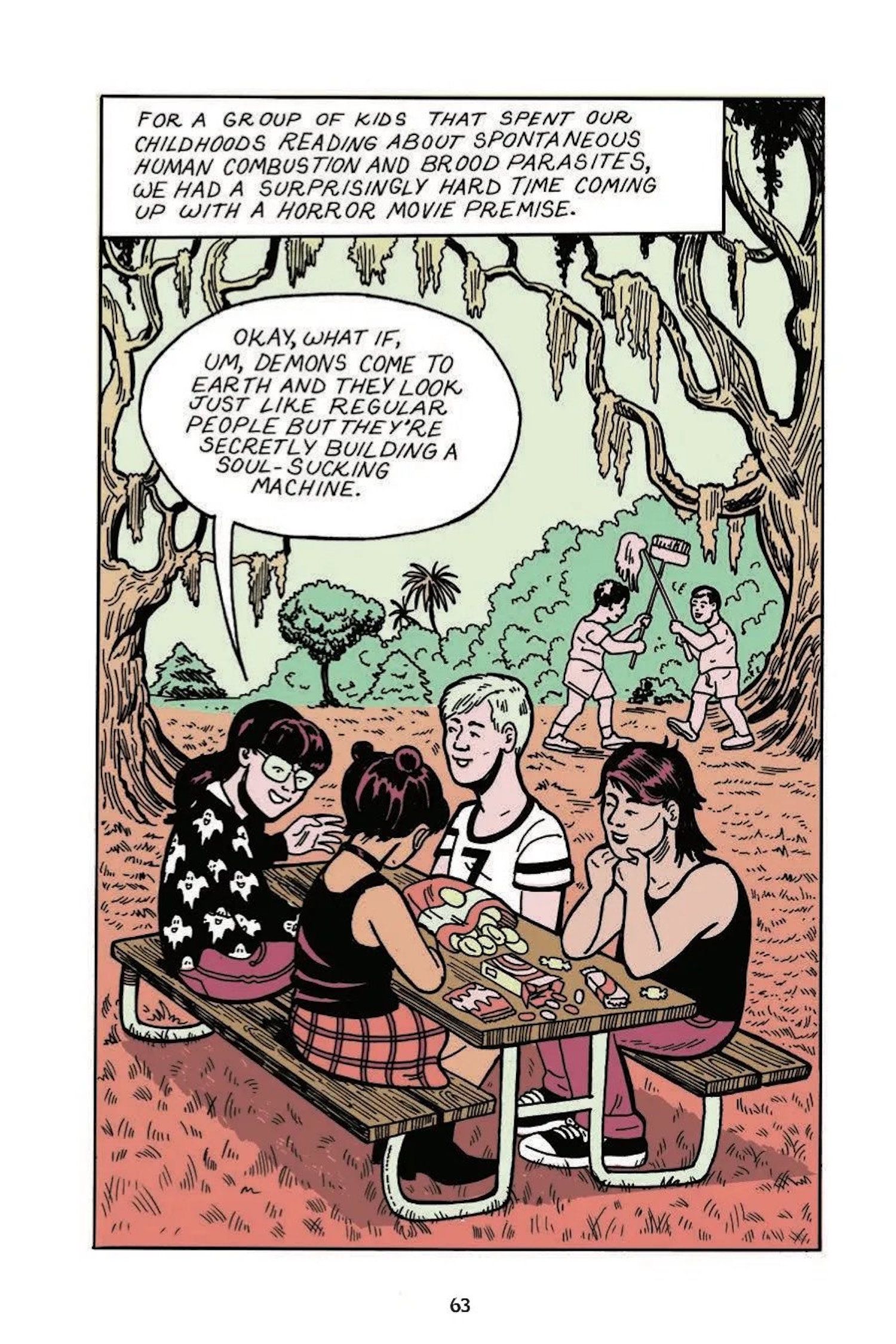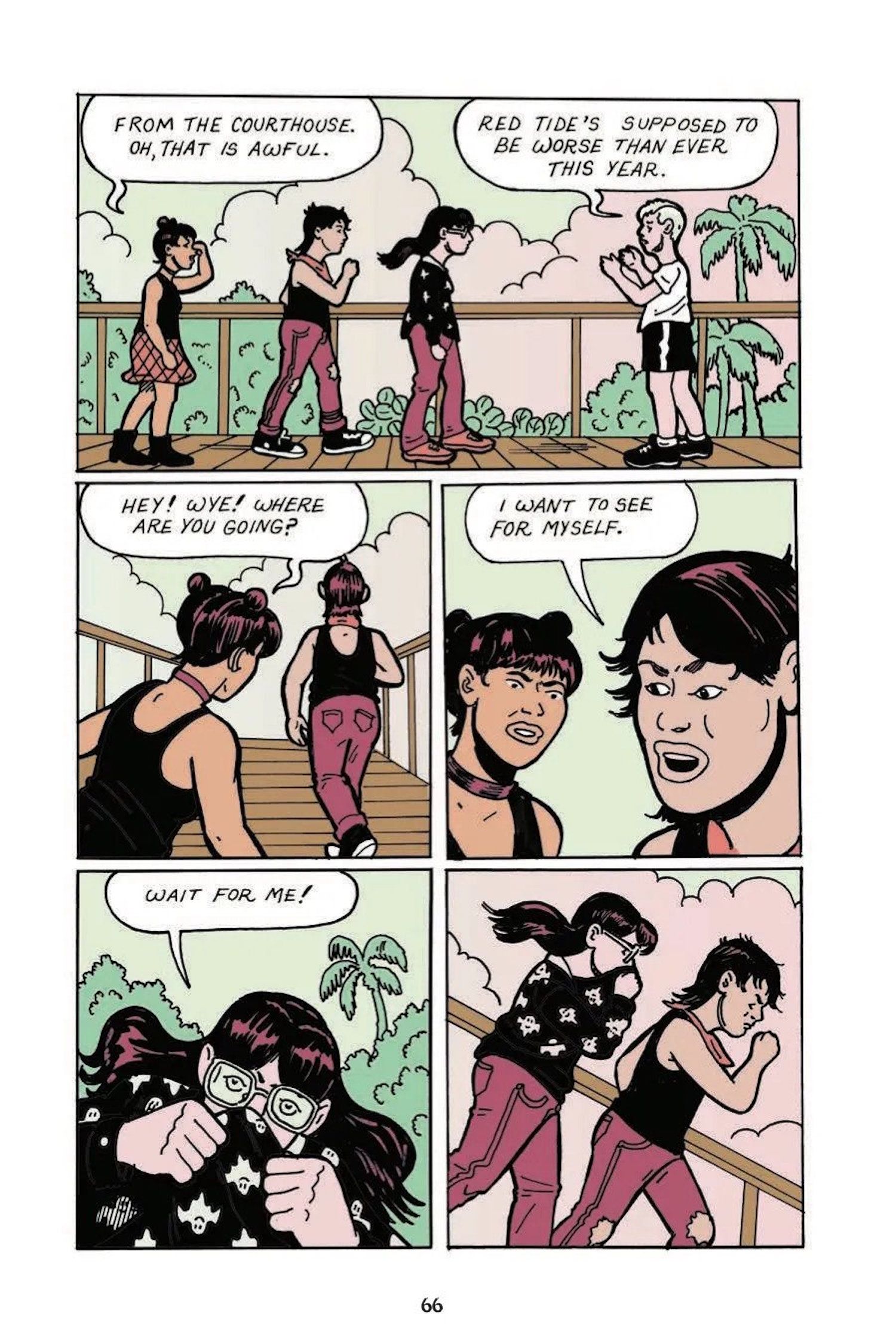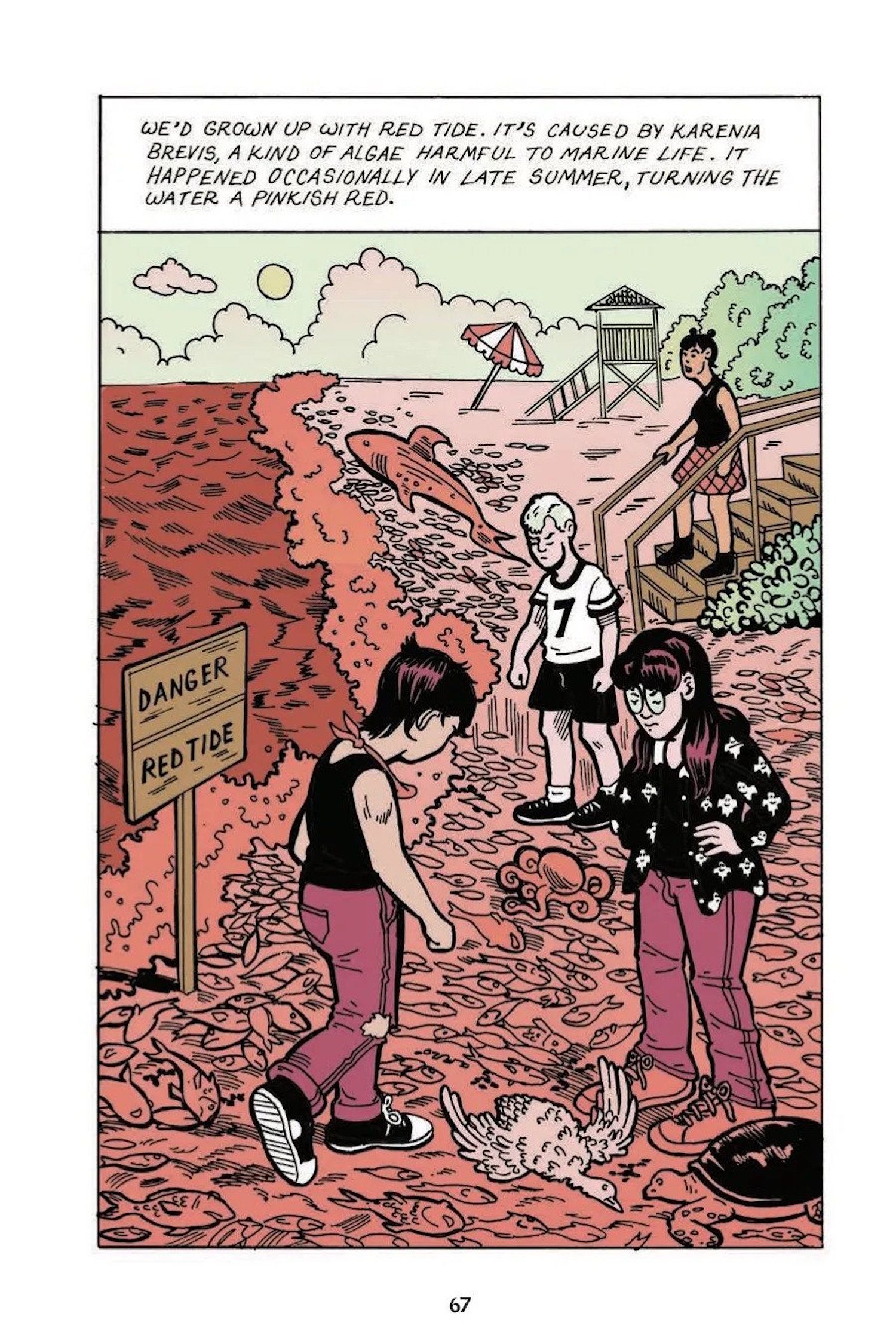Teenage Dana Drucker has a lot on her plate in Anya Davidson's new graphic novel, Night and Dana. She's struggling to balance her senior year, her fraying relationship with her best friend Lily, the repercussions of their diploma-threatening prank, the toxic algae threatening her coastal Florida hometown, and a burgeoning supernatural presence. When tasked with creating a horror film about climate change and putting her talents in gruesome special-effects makeup to more constructive use, Dana finds herself drifting away from Lily.
In an interview with CBR, cartoonist Anya Davidson discussed her newest comic from Graphic Universe publishing, Night and Dana, playing with genre, writing for young adult audiences, art in journalism, and growing up during an era of climate change.
CBR: In your career, you have done original comics as well as graphic journalism. Would you say that these two mediums influence each other?
Anya Davidson: I LOVE this question–and the answer is yes, absolutely, 100%. I vividly remember, in 2021, working on a piece about vehicle ramming attacks on Black Lives Matter protesters for The Nib (RIP) at the same time that I was sketching out some of the final scenes for Night and Dana. I use my platform as a comics journalist and as a graphic novelist to examine issues I care about. I care deeply about young people and the environment.
What first inspired "Night and Dana" and its themes?
Night and Dana follows Dana, a horror-obsessed teenager in a fictional South Florida town, as she discovers climate activism and grapples with some major life changes. When the story begins, she's committing a dangerous public prank, the repercussions of which affect her life in many unpredictable ways. When I was conceiving the story, I'd recently been to a climate rally in Chicago, where I saw members of the Sunrise Movement, a youth activist group, speak. I'm a horror nerd. For better or worse, I gave Dana a lot of my personality traits.
Night and Dana is a coming-of-age story, an ode to horror, and a climate activism story. What was it like to bring these three elements together?
It was fun! As I mentioned above, these are topics I care deeply about and spend a lot of time considering. Graphic novels are unbelievably labor-intensive. What's the point of making one if you're not completely obsessed with the themes?
What is it about the horror genre you love most?
We live with laws, social hierarchies, and strict moral codes. Horror gives us the tools to imagine life without them or to imagine them upended. The last horror comic I made was for a British anthology called I FEEL LOVE. It was about a troubled mother/daughter relationship. I wouldn't call Night and Dana a horror story. I see it as a coming-of-age story and kind of a meta-narrative.
What are the best parts of writing for younger audiences?
Night and Dana is my first YA book. I never imagined that I'd someday make stories for younger readers, but I've loved the process and would love to keep doing it.
Night and Dana is described as "environmental horror." How do you tap into a very real sort of horror like climate change while keeping it in the realm of fiction and fantasy?
I'm not sure I would characterize it that way. The story depicts two friends who are faced with the impact of the red tide, which is a very real, very horrific, and currently, [and] due to climate change, a very frequent environmental phenomenon. Their reactions to it differ. Dana, the protagonist, chooses direct action. Her friend Lily chooses to make an eco-horror film.
Art and activism are two healthy ways to cope with horrors of all kinds.
As an artist, how would you describe your creative process? What inspires your art style the most?
My creative process is pretty standard. I start with a lot of reading and research. Then, I collect reference photos, write a script, and draw rough layouts. Next, I tighten up the drawings, ink them, letter them, and finally color them. I love art and comics from around the world and from all historical eras. Some artists I love are Harvey Kurtzman, Leonora Carrington, and Trenton Doyle Hancock.
What do you hope readers take away most from Night and Dana? What are you most looking forward to people seeing in your story?
Art and activism gave my life purpose and direction. This book is a celebration of both. I hope the young people who read it come away feeling empowered to be themselves and to stand up for the things they believe in.
Night & Dana is on sale now.




